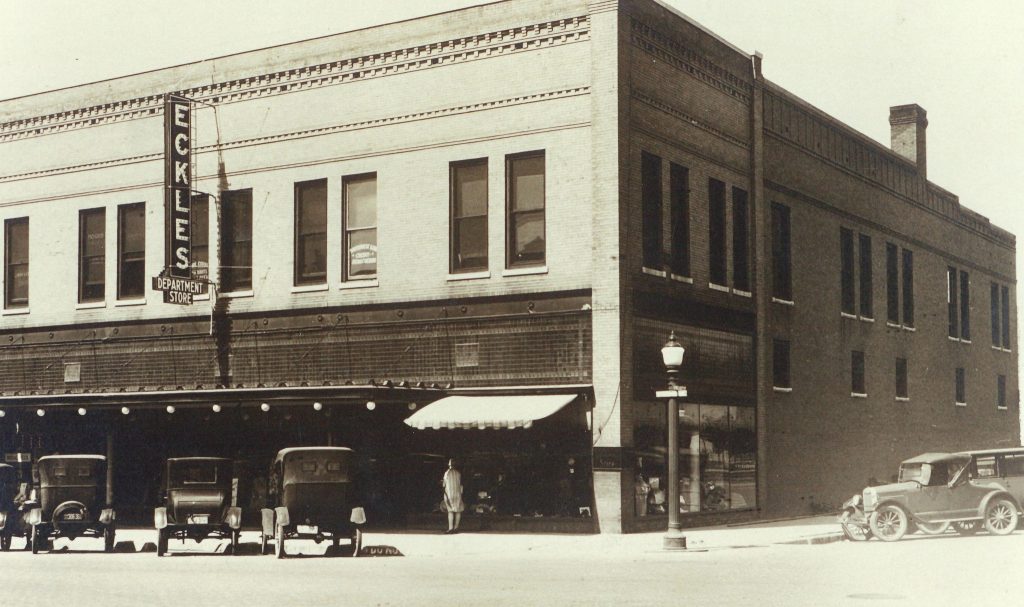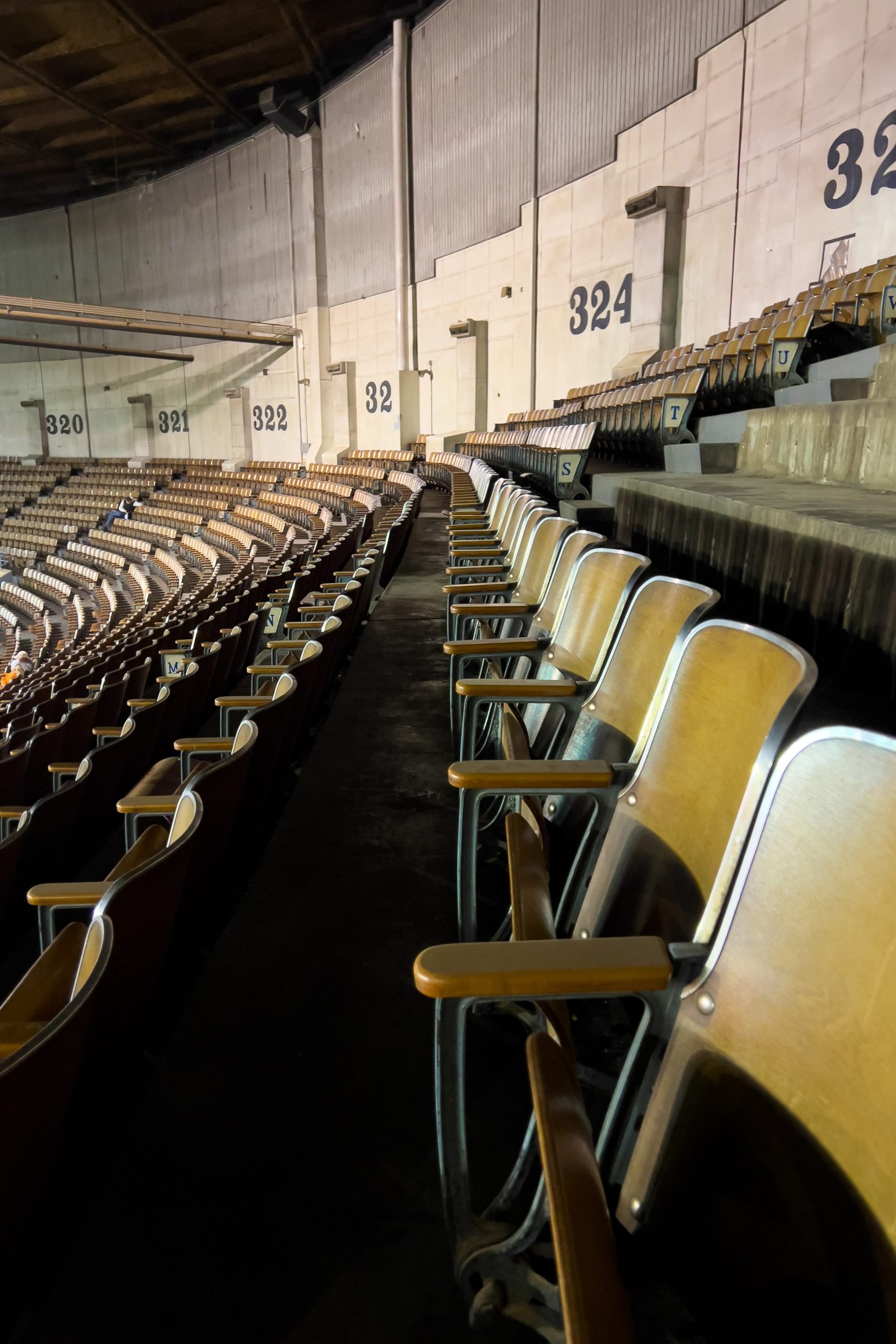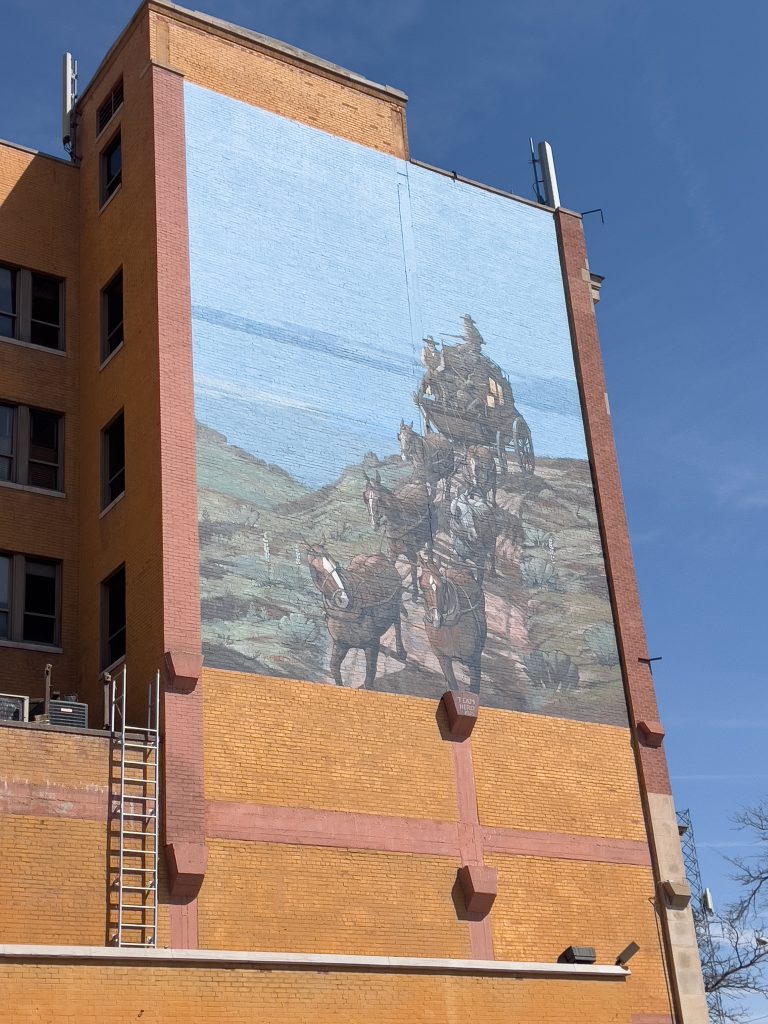Old dogs, old horses and old buildings

Historical buildings are without a doubt one of my favorite things. It can be an old, reddish orange brick downtown, a desolate catalog home in the middle of nowhere or a building where history just emits from it. Most always I’ll stop for a second look.
It doesn’t hurt I live near one of the most recognizably named historic towns in this part of the world, Dodge City, Kansas. It’s synonymous with cowboys, longhorns and the Old West. Most likely that’s where my love of old started. But more than once I’ve made the comment, “must have been before my time,” or “that’s not what it looked like in my childhood,” because Dodge City continues to change and evolve.
In its more than 150-year-old history change was inevitable. It started as a canvas-sided tent 5 miles from Fort Dodge to allow soldiers a place to get a shot of whiskey. Now it’s home to nearly 30,000 people, a couple of packing plants, notable manufacturers and a diverse population.
One of the biggest losses, in my opinion, Dodge City suffered was during the 1970s when urban renewal razed several city blocks in order to move the highway and create the Wyatt Earp Boulevard. The condition of the buildings was deplorable they say, and many claimed it was necessary to prevent vandalism and injury to people in the area.
Although urban renewal was before my time, I spend a lot of time scouring the internet for photos of downtown Dodge City prior to the 1970s. It’s amazing to see the brick streets (which are still around) lined with cars of the era and the advertisements on the sides of buildings and neat signage. There’s a downtown revitalization project currently going on, and artist Stan Herd even spent early 2025 touching up the stagecoach mural on the old First National Bank building. And it’s spectacular in all its glory. I hope the project does what it’s intended, to get people to shop and be in downtown Dodge City.

During spring break my boys and I took a quick overnight trip to Oklahoma City to visit “all of Mom’s favorite places” and get away. One of the stops was at the fairgrounds to watch the Grand Drive at the Oklahoma Youth Expo, one of the state’s longest running livestock shows and the last time it will be held in the Jim Norick Coliseum. The “Big House” will be demolished later this year, I believe, and the new coliseum is already being constructed next door.
The Jim Norick Coliseum is a large multi-purpose arena, which has hosted many livestock shows, wrestling competitions, state basketball championships, and concerts. It was completed in 1965 at a cost of $2.4 million and was the largest indoor facility in OKC until the construction of the Myriad Convention Center. The National Finals Rodeo was held at the coliseum from 1964 to 1979 when the NFR moved to the Myriad. The NFR left OKC for Las Vegas in 1985.
I was always enamored with the coliseum and ran barrels in it a few times from 2009-2013 at the Better Barrel Races World Finals. It’s one of those places where you can feel the history in it. More than once I found a seat—wooden folding stadium seating—and watched silently what was in front of me.
I think my fondest memory was at the BBRWF the year construction on the Super Barn, which is north of the coliseum, and the weather was not cooperating. A construction tarp was flapping in the Oklahoma wind, and my horse was having no part of it. Luckily a fellow western Kansas competitor’s dad was waiting in the alley and was able to calm my horse enough for us to make our run.

Another old building, according to some, has reached the end of its life, is the Stadium Arena at the National Western Stock Show complex. I was a college freshman or sophomore the first time I was able to visit the stock show, and we sat and watched the shows in the stadium on a day off from livestock judging practice. Its impressive height and brick facade was magical in my eyes. You could breathe in its history too when you stepped inside. The green seats and light streaming through those windows. Perfection.
According to a Jan. 3 article in the Fence Post by Rachel Gabel, the 2025 NWSS marked the last year of the Stadium Arena and livestock shows on “The Hill.” A huge tent held the first shows and sales at the site in 1909 as breeders wanted to fulfill the mission of the show, “to improve the quality of livestock in the West.”
Gabel quoted the secretary and general manager of the NWSS from 1917, Fred P. Johnson, in her story and his last words of the quote struck a chord with me. They can’t be truer.
“An exhibition of this kind cannot stand still; it must either go ahead and increase in popularity and influence, or back up and curtail exhibits until it dies a natural death,” Johnson said.
More than a hundred years ago, Johnson said something relevant for today’s facilities and events. People change. Livestock changes. Shows change. We either change to keep up or the way of life we’ve come to love will have to change too. And maybe not for the better.
As much as I hate to see change and those old buildings come down, sometimes it’s inevitable. I hope people can continue to preserve history and build back better. Homes are never going to feel like those built at the turn of the century, and arenas will come and go, but I sure hope someone along the way has the foresight to protect what’s valuable and shout it from the rooftops what a gem these places and structures are. I know I will.




